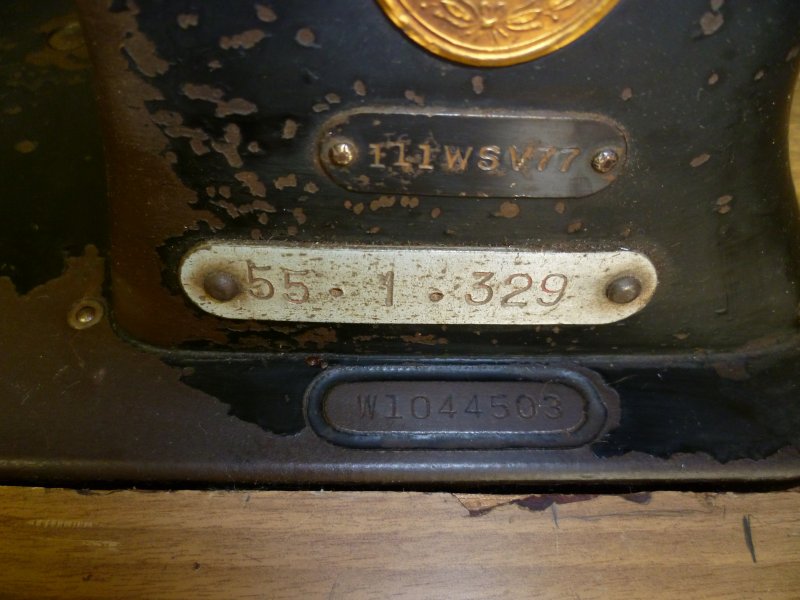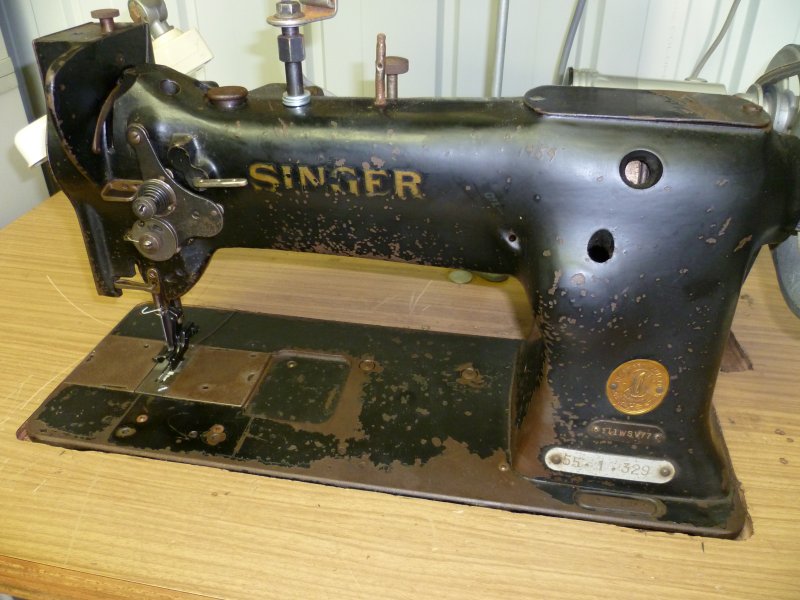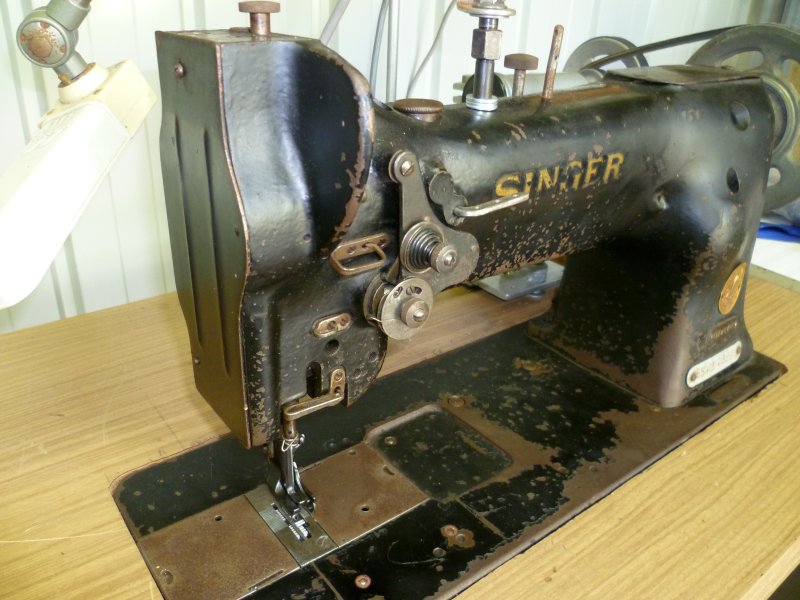-
Posts
4,801 -
Joined
-
Last visited
Content Type
Profiles
Forums
Events
Blogs
Gallery
Everything posted by dikman
-
Glad to hear the 155 is working. I can't help with the 153's as I don't know anything about them. My usual process is to download as many manuals/parts lists as I can find on the various models and then start looking for differences. That's how I came to the conclusion that my 111WSV77 is closest to a 111W153. I'll be interested in what you find out.
-
Oldnslow, it looks more like it was the "original" that the Chinese patchers are based on. This appears to be a bit more refined. Very nice looking machine.
-
If you've never sewn on a machine like this before (and I assume you mean an industrial machine?) then you have a steep learning curve ahead. Starting with a twin needle machine is probably not a good idea, as Uwe said. I must say though that it looks like a nice machine, being a Seiko and a walking foot. If you only want to have one machine then a cylinder arm is probably the most versatile, and a servo will let you learn to use it without having to fight a clutch motor. Wiz's sticky at the top is a good place to start learning about industrial sewing machines.
-
Makes sense, or at least as much as anything can with these machines. If a "special" machine proved to be of worthwhile design it makes sense that it would be put into production. Of course, trying to figure out which SV became which model(s) could be a bit of a problem. Due to the records of the K factory surviving it may be possible to work out some of these, but the W machines will be extremely difficult, if not impossible, to do with any degree of certainty.
-

Carved Loop Holster for SAA
dikman replied to Josh Ashman's topic in Gun Holsters, Rifle Slings and Knife Sheathes
Josh, thanks for the detailed response, most informative. And yes, I did notice the edges before, very nice indeed. Much like I'm sort of doing (but I've got a little way to go yet). I prefer trying to get good edges with a "natural" finish as I don't want to use edge coats/colours - while they look "sharp" they still look somewhat artificial to me, my aim is to try and get my holsters/belts so that they will age gracefully as they get used (and probably abused!). -
The logical assumption is that someone else did it for the OP. If that is the case then I would hope they didn't touch anything else 'cos if they couldn't even fit the handwheel correctly then they shouldn't be touching the machine at all.
-

Carved Loop Holster for SAA
dikman replied to Josh Ashman's topic in Gun Holsters, Rifle Slings and Knife Sheathes
I'm not a great fan of leather carving (personal thing) but that is beautifully executed! The definition of the carving is superb. Which brings me to a question - do you wet form the holster to the gun? The reason I ask is that in my limited experience with stamping I've found it's very easy to lose definition by wet molding after the stamping, but yours doesn't appear to have lost anything. -
Thanks for that Bob. It's nice to know there was a genuine reason (just sounded a bit strange as no mention was made of slipping).
-

Singer 96-10 Clutchadjust adjustment
dikman replied to Gregg Dispoto's topic in Leather Sewing Machines
"The 2 lock nuts have an extended barrel on and are probably done up." Thanks Rocky, that makes sense (I like to know these things ). -
I'm really at a bit of a loss as to why, on a brand new, unused machine, you feel the need to check this one particular part. What makes you think that it's not fitted correctly?
-

Singer 96-10 Clutchadjust adjustment
dikman replied to Gregg Dispoto's topic in Leather Sewing Machines
I agree about the screw, Constabulary, but from what I can see all that is going to do is vary the amount of pressure required on the foot pedal to engage the clutch, and that's simply an adjustment to suit the operator. It's not going to make it any smoother. Does it work ok now, or is there an actual problem? I just noticed two screws/bolts in the top picture (right at the top) which I presume are for adjusting the angle of the clutch to ensure it's parallel to the motor part of the clutch assembly. Hard to tell, but it looks like they're locknutted screws but the locknuts aren't engaged? Like I said, hard to tell. -

Lining opinions
dikman replied to CaptQuirk's topic in Gun Holsters, Rifle Slings and Knife Sheathes
As JLS said, it will look "unfinished" (and a bit cheap) if the lining suddenly stops. It might not normally be highly visible, but if someone gives the work a close inspection and sees the lining only covering part of the work they might think it's a bit "amateurish"? As for finishing the flesh side, the wooden burnisher I made (fits on my grinder) has a fairly wide flat area and I've experimented with running the flesh side over it, either dampening it slightly or applying a bit of wax, and it does give a slightly flatter finish with a very slight sheen. But normally I don't do anything to the flesh side other than stain it. -
Mike, I fiddled with my 211G166 but the best I could get was about 5spi. I think the feed eccentric would need to be changed completely to get any better - and that's not a job I intend taking on! My 111WSV77 will give me 3 1/2 spi, even though the number wheel is only marked down to 5. Looking at 3 1/2 spi, however, with #138 thread, looks a bit "odd" to me and I don't think my '77 will handle heavier thread.
-
Madmax, that looks like it's in better condition than mine! No, there's no cap it's just an optical delusion caused by the camera angle. It looks just like yours, in fact from the front the machines look identical. The 155 is probably the pick of the bunch for leatherwork.
-
I was going to make one (pretty simple design) but then found one on ebay (from China) cheap enough that it wasn't worth my while making it. I had to modify it, however, as the two wooden bars were actually one piece with a slot cut about 2/3 the length.I could see that would be an issue so continued the cut to separate the pieces, fitted an adjustment screw at the end and a spring inside the bars to keep them apart. Works fine so far, but I think I'll do Red's mod with the dowels. And it was less than 1/2 the cost of the "proper" one.
-
I had a quick look at that manual you posted, Mike, and the major difference that I could see between the 566 and the 166 is that the 566 is an auto-oiler?
-
Madmax, I don't think you're derailing the thread. My idea was to have a single thread about the SV machines so that someone who acquires one (or wants to know about the SV designation) could hopefully find, in one place, the sum total of knowledge about just what that designation means (and then realise how little is known about them!). I too wondered about using serial numbers, but given the lack of records for W machines, the fact that no-one is really certain just how SV machines fit into Singer's timeline and the huge number of models and sub-classes that Singer made I figured it probably wouldn't work. Plus what Lumendoodle and Constabulary said makes sense - they probably just had huge inventories and grabbed what they needed to make something up.
-

Juki DDL 555-5 for dog collars and canvas gear
dikman replied to TeriYool's topic in Leather Sewing Machines
The Singer 111W152 is obviously an older machine, it has 3/8" clearance under the foot, 5 spi and no reverse (no big deal). It should handle up to #138 thread. Parts should be fairly easy to find. Couple it with a servo and speed reducer and it will have plenty of grunt. -
This got me curious (again) about my WSV77. I haven't used it much, but the other day, while sewing, I thought that the presser foot clearance didn't seem to be what I remembered. So I decided to adjust it, but just couldn't seem to get much clearance. Knowing lots more about Singers (and machines in general) now than I did when I bought it I started delving into what adjustments I could find. Low and behold I found a driving eccentric on the main shaft that was coupled to the presser foot lift. (I didn't realise what it was when I first got the machine). The adjustment looked like it was in a fair way, plus the screws were a bit loose, so I wondered if it had been slowly re-adjusting itself! Anyhow, I cranked it out to maximum, readjusted the needlebar/presser bar gap and checked the lift clearance - 3/8". I then checked the stitch length - 3 1/2 spi. The specs for the 111W152 - 153 are 3/8" lift and 5 spi, the 154 is 1/2" lift and 5 spi, the 155 is 1/2" lift and 3 1/2 spi, So I may have found the major difference with the WSV - it has the 3/8" lift of the 152 - 153 but the 3 1/2 spi of the 155 (although the numbers on the stitch wheel stop at 5 it goes to a measured 3 1/2 spi. I suspect that I can increase the foot clearance by readjusting the presser bar height but that would probably reduce the foot pressure on thin leather. I'm guessing that 3/8" is the nominal clearance for this machine.
-
Cheyenne, welcome to the forum. It's probably the best resource for learning about leather and leather sewing machines - but there is a lot to learn! To a large extent the machine you need will be determined by how thick you want to sew. A heavy duty machine isn't going to be much use on lighter stuff and conversely something that will handle lightweight materials will definitely struggle (or die!) on heavy leather. Will you need a flat bed or cylinder arm? Another factor is the thread size you want to use. I would hazard a guess that a Singer 111/211 class, Consew 206, Juki 563 etc might be a reasonable starting point. Parts aren't too hard to find for them, but most will probably come with a clutch motor (not the easiest to master for someone just starting out) but servo (DC) motors aren't that expensive and are pretty easy to fit. And yes, consider Wiz's thread as the starting point for your journey.
-
So the SV designation goes back a lot further than I thought, judging by that extract for the 34KSV5.
-
Yeah, I suspect I'll end up refurbishing this one at some point as it has a fair bit of rust on it. Of all my machines this one is probably in the worst condition. I'll have to start compiling a list, and availability, of parts first.
-
It's a real pity that the records from the Bridgeport factory don't exist, as it makes it extremely difficult (if not impossible) to try and date the W machines, or even try to put them in some sort of context. As to my machine, part of me says to strip it and refurbish it and another part says to leave it as is.
-
That's one of the big problems with this subject, Gregg, there have been quite a few statements made about the SV designation but they are almost impossible to confirm. I'm guilty of believing something that someone stated (about a 111WSV71) until, as I learned more, I realised that he was probably only repeating something that he himself had heard but actually had no idea himself. As far as I can figure SV's were made before, probably during and after WWII, but that doesn't necessarily mean that your statement is incorrect. Just another piece of the puzzle. Meantime, a couple of photos of my 111WSV77. I'm guessing that the additional number plate suggests it may have been part of a very large company.






